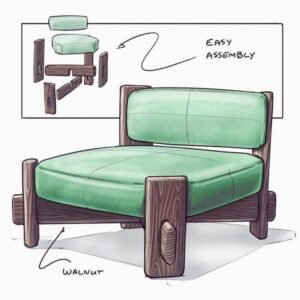Stripping Paint Off Woodwork: Lessons from the Trenches
So there I was, coffee in hand, staring at this old wooden doorframe that had seen better days. You know those doors you find in a hundred-year-old house? The ones that probably have stories to tell? Well, my house has a few of those, and I decided it was time to give ‘em some love. Only problem was, they were painted—like, bad 80s white paint that had cracked and yellowed over the years. I knew it was time to strip that paint, but I had no idea what I was getting myself into.
The First Few Swipes
I remember the first time I took a paint scraper to that old wood. I can still hear the sound of the scraper dragging along the surface—it was almost a satisfying scratch, like nails on a chalkboard but in a good way. I thought, "Hey, this isn’t so bad!" But as it turned out, that beautiful old pine was more stubborn than I expected. It was like it was holding on to its past with a vice grip or something.
I grabbed a can of chemical stripper thinking that would speed things up. Now, let me tell you, I had heard the stories about how smelly these things can be, but oh boy, they didn’t prepare me. One whiff, and I felt like I’d stepped into a paint factory. It was intense, and for a moment, I almost turned back. But the thought of that door looking all fresh and new kept me going.
The Great Dilemma: To Sand or Not to Sand?
After a couple of hours of scrapping and huffing those fumes, I hit a wall. I had done a decent job, but I could still see bits of old paint shimmering in the sunlight. That’s when I started thinking about sanding. My neighbor, Tim, who was always tinkering on his porch, had warned me about the perils of sanding too much. He said I’d end up in a haze of fine dust, looking like I’d been in a battle. But honestly, I thought, how hard could it be?
So I borrowed a sander from Tim and got to work. Now, I don’t know if you’ve ever used one of those, but as soon as I flipped the switch, it felt like I was holding a tiny jet engine. The vibrations nearly sent my hand flying! And the dust—oh man, I could barely see the door for a solid five minutes. I felt like I was in a snowstorm, only instead of snow, it was all this fine wood dust that managed to get everywhere. I swear it even got in my coffee!
Almost Gave Up… But Didn’t
At one point, I just sat there, exhausted, with my hands on my knees and dust everywhere. I thought about giving up. Honestly, who needs a perfectly stripped doorframe, right? But then I looked closer at the grain, and I could see the beauty lurking beneath all that mess. It was almost like the wood was winking at me, saying, “Hey, don’t quit now, I’m worth it.” That made me chuckle a bit, and I shook off the dust and went back to work.
It took longer than I thought, and I ended up changing my approach about halfway through. I switched to a finer grit sandpaper—240, if I remember correctly—thinking it would give me that smooth finish that’s so nice to touch. And you know what? It worked wonders. The wood started to shine, and that sweet smell of fresh pine filled the air. That smell is one I’ll never get tired of. It’s like a little piece of nature right in my house.
The Final Touches
Once I had it stripped down to bare wood, the real fun began. I had prepped myself for the re-staining process and had picked out a nice dark walnut stain. You could say I was pretty stoked at this point. But oh boy, did I screw that up too. I thought I could just slap it on with a rag and call it a day. Nope! I ended up with streaks and blotches that made it look like an art project gone wrong.
So, back to YouTube I went to figure out how to apply stain properly. I learned about the whole wiping technique, and believe me, that made a world of difference. When I finally applied that stain correctly, it transformed right in front of my eyes. The colors just popped, and it looked like the wood was thanking me for all the effort.
A Little Bit of Heartstrings
When I finally stood back and admired my work, I felt this warm wave of satisfaction wash over me. It was more than just a doorframe—it was a moment. Keep in mind, I had nearly given up multiple times. Those little moments of doubt? They don’t just go away when you finish a project. They linger, waiting to tell you something. In my case, it was a reminder that patience pays off, and that the process can be just as rewarding as the final result.
Takeaway
So, here’s where I land after all that: If you’re eyeing an old piece of wood and thinking about stripping it down, just dive in. It ain’t always pretty, but it’s worth every dusty minute. And maybe you’ll find yourself laughing over mistakes—or smelling pine and remembering why you started in the first place. Man, if I had known how satisfying it would be, I would’ve taken that first swipe much sooner. So go ahead, grab a cup of coffee and get to it! You might just surprise yourself.










